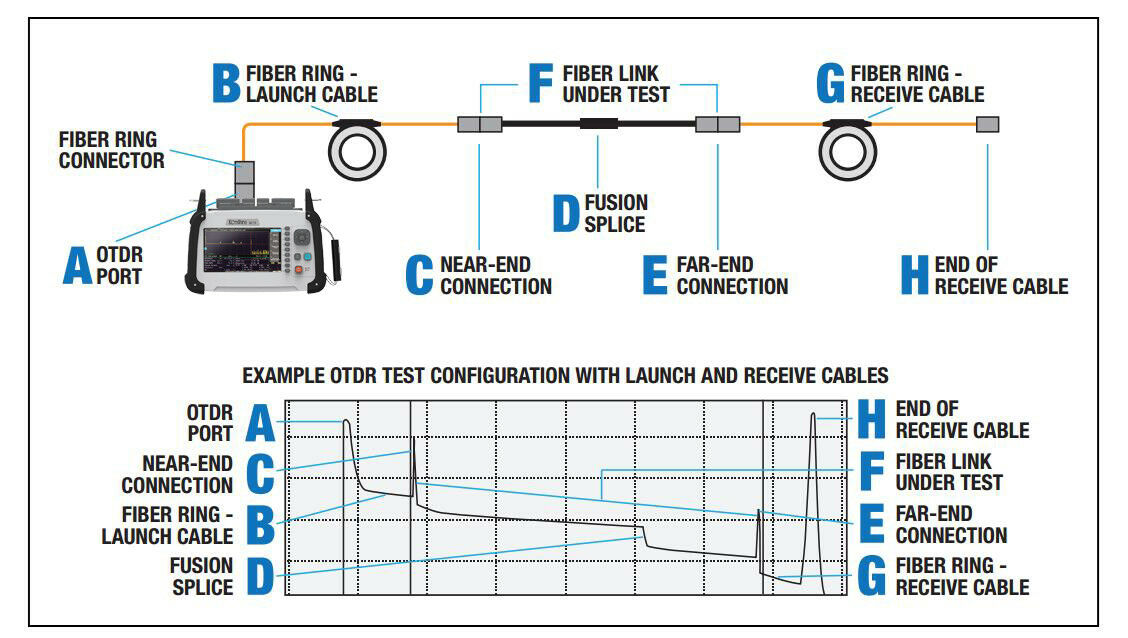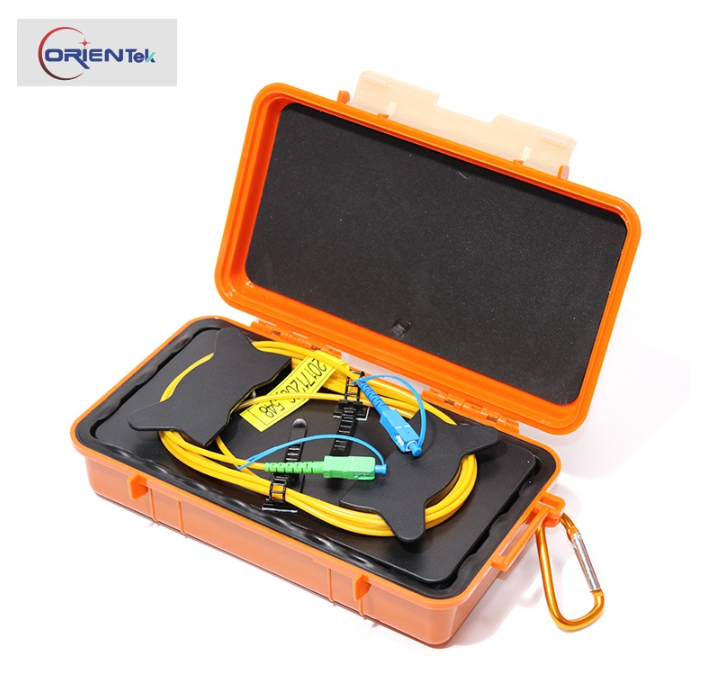Optical Time Domain Reflectometry (OTDR) is an essential fiber testing tool. It can test optical losses and locate breaks, connectors and connectors in fiber optic networks. However, OTDRs have a “dead zone” and may affect test results if appropriate measures are not taken. To overcome the limitations of the OTDR dead zone, OTDR launch boxes are being used. This article will introduce the OTDR launch box for your reference.

Basic of OTDR Launch Box
The OTDR launch box has many other names, such as dead zone boxes, pulse suppressors, fiber optic rings, fiber optic launch cables, etc.
The dead zone of the OTDR is caused by high reflection levels and is affected by the pulse width and may extend hundreds of meters from the OTDR. It is recommended to use a full-length fiber before the fiber under test. Therefore, the OTDR receiver can have enough time to stabilize. The OTDR launch box is actually a long fiber spool that is inserted between the fiber under test and the OTDR to ensure an OTDR dead zone in the OTDR launch box. The fiber link under test is then not greatly affected by the dead zone of the OTDR
OTDR Launch Box Usage Guide

In the packaging of the OTDR launch box, the box design is the most commonly used because of its durability advantages. It has a long-axis fiber with pigtails at both ends. One of the pigtails is used to connect the OTDR, and the other pigtail is used to connect the fiber under test. After connecting the input and output to the appropriate ports, the OTDR boot box can be used to test the attenuation of the fiber link.
It seems that the use of the OTDR launch box seems very simple. However, handling them should be careful. If you want to get accurate test results for the fiber link, the length of the fiber in the OTDR launch box should be long enough to cover the entire dead zone. OTDR launch boxes are like fiber optic cables and come in different types.
Which OTDR Launch Box Fit Your Applications?
The choice of an OTDR launch box is like choosing a fiber patch cord. The type of fiber needs to be considered, the type of connector that the port is connected to on the pigtail, and the type of polishing of the connector. In addition to this, another important factor to consider is the fiber length of the OTDR launch box as described above. The fiber of the OTDR launch box should be longer than the dead zone. Therefore, most fiber optic OTDR launchers can support hundreds or thousands of kilometers.

